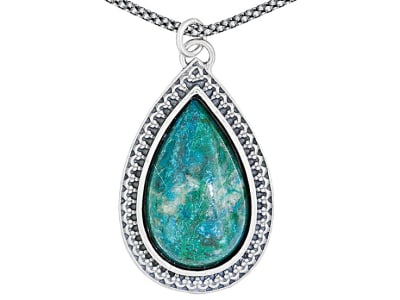The rich greens of Eilat stone come from it being a unique combination of various copper-bearing minerals including chrysocolla, malachite, azurite, and turquoise. Eilat stone is the national stone of Israel. It is known as King Solomon stone, as it comes from what is storied to be King Solomon's mines in the Timna Valley of Israel.
General Information
LWUV: Inert
Eilat Colors
-
 Blue
Blue -
 Green
Green -
 Multi-color
Multi-color
Alternate Names
King Solomon Stone
Countries of Origin
Unknown; Israel; India
History
Envision rich greens and compelling blues... picture earthy browns, grays, and forest greens... envision eilat stone. This stone is a unique combination of various copper-bearing minerals including chrysocolla, malachite, azurite, and turquoise. It's found primarily in the Timna Valley of Israel - the area where King Solomon's mines were thought to be located. It's the national stone of Israel and sometimes called the King Solomon stone. With a hardness of 6 - 7 on the Mohs scale, it's very wearable. Exercise care, especially when storing it.
More About Eilat
As old as this stone is, most folklore surrounding it is contemporary. As with all folklore, there's no science behind the contemporary belief that it will give you a sense of wholeness and completion.
